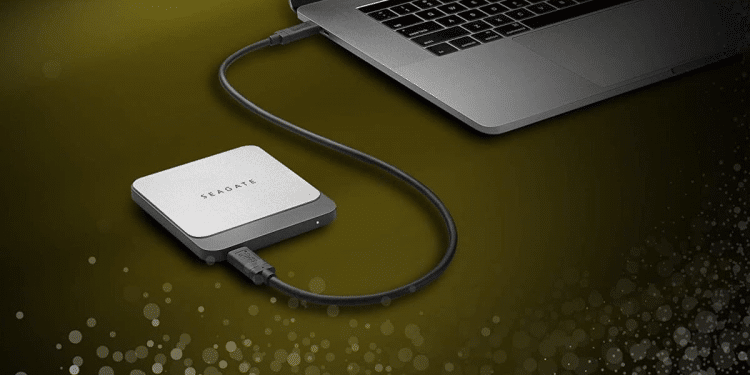If you want to learn more about the different external memory options, read this article to learn about the main types of external storage.
1. CD
Manufactured in 1982, compact discs (CDs) are one of the oldest forms of external memory. At the time, it was impressive how CDs could hold up to 700 megabytes. It was initially made to replace cassette tapes until it grew and led to the creation of various types of CDs. The differences between each type lie in the read and write restrictions for users.
CD Read-Only Memory (CD-ROM): This type of CD does not allow users to erase or write to what is on the disc. Recordable CD (CD-R) – A CD like this gives users the ability to write to the CD only once, but has an unlimited number of reads available. Rewritable CD (CD-RW): With a CD like this, you can erase and write to it up to 1000 times.
2. DVD
Digital versatile discs (DVDs) are very similar to CDs in that they also use laser light to store and retrieve data. This particular way of storing or retrieving data is characteristic of optical storage devices. Although a CD and a DVD are similar in many ways, they are also different in many ways. One difference is its storage capacity.
Compared to CDs, DVDs have a much higher storage capacity. This external memory is capable of storing 4.7 gigabytes (GB) of data as standard. Generally, people use DVDs to store movies and videos, while CDs are more commonly used to store music.
3. External hard drives
One of the most common external memory devices today is external hard drives. An external hard drive is similar to a hard drive that you would find on a computer. However, the difference between the two is that an external hard drive is portable and connects to a computer via a USB cable or even without a cable. Also, an external hard drive can be connected to other computers, unlike an internal hard drive. An external hard drive has a large storage capacity. Its storage capacity can range from 500MB to 1TB.
In addition to storing random data, there are many specific uses for an external hard drive. You can use it to store backup data for your internal hard drives, or you can partition it so you can share it with other people. External hard drives are among the best external memory storage options for users right now. With its portability and massive storage capacity, this is no surprise.
4. Flash drive
Another popular type of external memory is the flash drive, which is a small device that can store and transfer data to and from various other devices. It goes by many other names, such as USB drive, USB stick, USB stick, and more. Flash drives can come in all shapes and sizes and they also have different memory capacities. However, for the average user, a 32GB flash drive would probably be large enough for different purposes.
There are also out-of-the-box creative ways you can make use of a USB stick. It can serve as a portfolio in your career, as concert sticks for musicians. You can even use it to promote your business during events, like in a USB brochure.
5. PC Card / External PC Memory
In the past, if you wanted to expand the memory capacity of your PC, you had to have one of these on hand. They are thin and about the size of a credit card. There are five types of PC Cards: Type I, Type II, Type III, Type IV, and Compact Flash Cards. The difference between each type is its thickness and interface. Today, you will rarely find a laptop or notebook that uses a PC card. Instead, you will have SD card slots or USB ports available anywhere.
6. Memory card
Memory cards are smaller and thinner external memories that users often store on other devices. The most common types of memory cards are CompactFlash, Memory Stick, SD Card, and xD-Picture Card. You can use memory cards for a variety of devices, including video game consoles, mobile phones, and cameras. Memory cards are usually an add-on or main storage for a specific computer.
The largest storage capacity of a memory card is around 512GB. You can access memory cards through a slot on your laptops or if they don’t have a memory card slot, a memory card reader.
7. Online/cloud storage
Today, you don’t need to have physical devices to have external memory storage. Online or “cloud storage” is another option that uses the Internet. Although technically cloud storage is a physical server, it still allows you to access your data anywhere. As long as you have an internet connection and have saved your files to a cloud storage provider, you should be good to go.
The most popular cloud storage service providers include Google Drive, Dropbox, and Microsoft’s OneDrive.
With cloud storage, you generally pay a monthly fee to be able to store your data, which is different than other external memories on this list, which generally require one-time payments. There are also free options available, but with limited storage.
External memory is a useful device that is increasingly needed today. Depending on your needs and other factors, such as budget, there are different types of external memory that you can choose from. We hope this guide has helped you learn more about external memory and the options available to meet your needs.












